6 Flowering Full Sun Desert Plants to Grow
Updated: Feb. 20, 2024
Is your yard hot, hot, hot? Plants these flowering full sun desert plants that will grow and thrive even in the hottest conditions.
Do you live in the desert or have an area in your garden where the sun just beats down relentlessly, making it hard for your plants to survive? Usually these areas are near a wall, which absorbs the heat from the sun, only to re-release it towards your plants making it very difficult for them to grow. Believe it or not, there are beautiful, flowering full sun desert plants that will thrive these areas with reflected heat. Working as a horticulturist, I have encountered many areas like this and have learned what plants will do well and those that don’t. So I thought that I would share some of my favorites that have done very well growing in the Sonoran Desert. Some of these plants can be used in colder climates as well. I have included planting zones and the lowest temperatures that they can survive.
For more picks, check out the top 10 heat-tolerant plants.
Bougainvillea
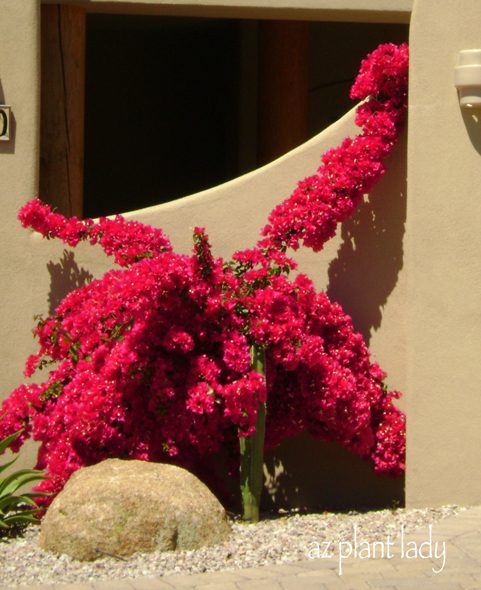
Bougainvillea grows very well in both tropical and semi-tropical climates. Hardy to zone 9 (20 degrees F), they will suffer frost damage, but will recover quickly in the spring once pruned back. The bright color ‘flowers’ aren’t really flowers at all – they are called ‘brachts’ and surround the tiny, cream-colored flower. Bougainvillea can be trained as a shrub or as a vine. They are drought- tolerant, but do best with supplemental water.
‘Green Cloud’ Texas Sage
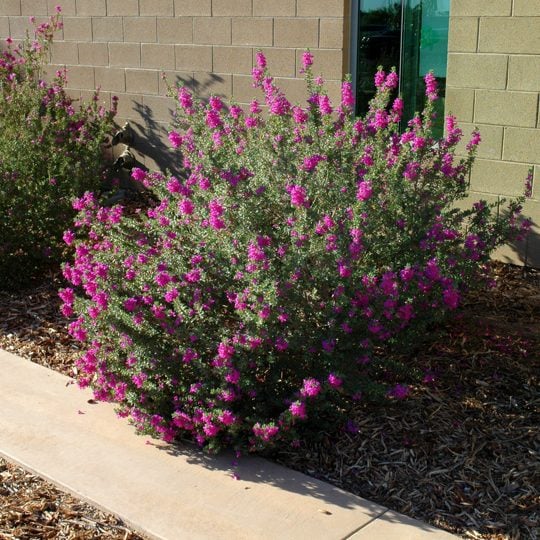
This beautiful flowering shrub is native to the Chihuahuan Desert and produces flushes of purple flowers throughout the summer and fall months. Hardy to zone 7 (10 degrees F), ‘Green Cloud’ Texas Sage (Leucophyllum frutescens ‘Green Cloud’), thrives in areas with hot, reflected sun. Landscapers tend to prune them into ‘balls’ or ‘cupcake’ shapes, removing much of the flowering buds. I recommend pruning back in early spring and then letting them grow into their natural shape.
Discover the desert birds of the Southwest.
Red Yucca
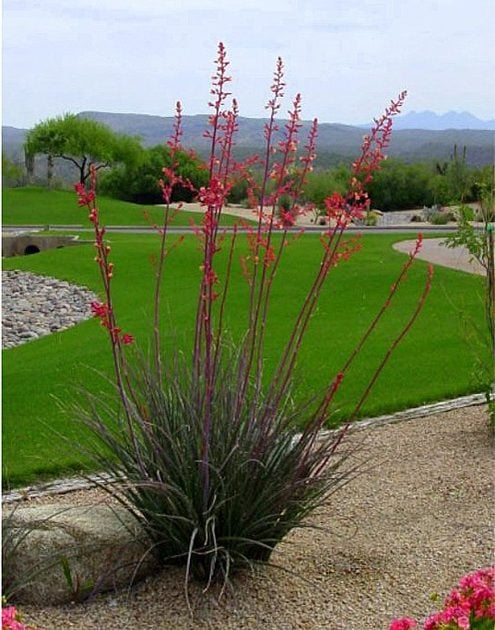
Red yucca (Hesperaloe parviflora) is a beautiful succulent. The leaves look grass-like and in spring, coral colored flowers are produced. They are extremely low-maintenance and drought-tolerant and hardy to zone 5 (-20 degrees F).
Meet the pyrrhuloxia or desert cardinal.
Red Bird-of-Paradise
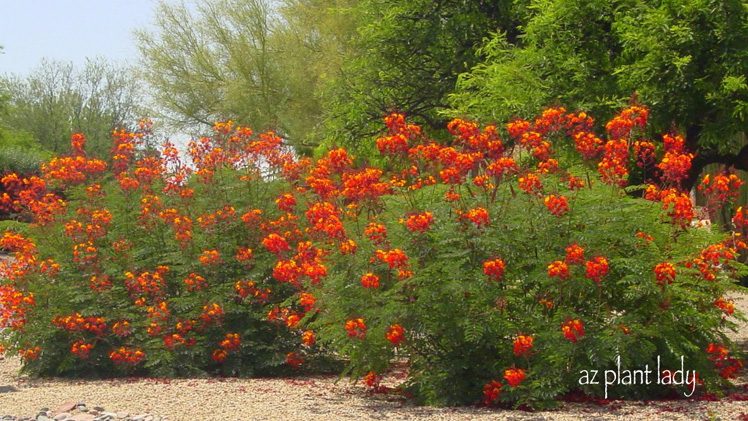
This shrub is a huge favorite. Gorgeous orange/red flowers cover these large shrubs all summer long. Known by different common names, be sure to use the botanical name (Caesalpinia pulcherrima) to make sure you get the right plant. Hummingbirds can’t resist the flowers. Prune back to 1 foot in January. Hardy to zone 8 (15 degrees F).
Desert Cassia
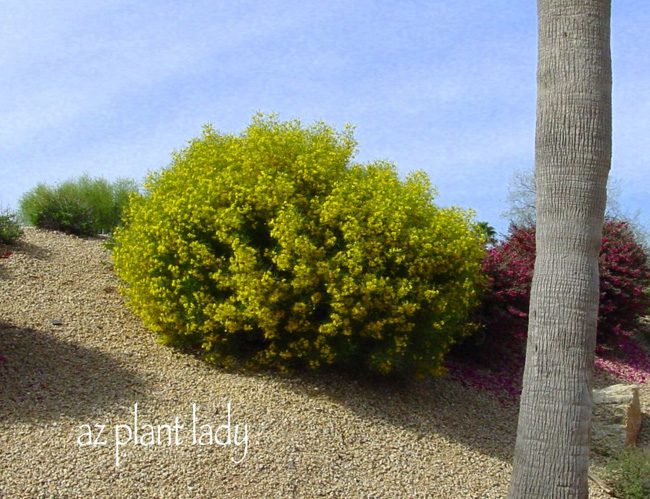
Bright yellow flowers cover desert cassia (Senna nemophila) in the spring. This Australian native is well adapted for dry, arid regions. Prune back once flowering has ended in late spring. Hardy to zone 7 (10 degrees F).
Lastly, I would like to share with you one of my favorite full sun desert perennials.
Desert Marigold
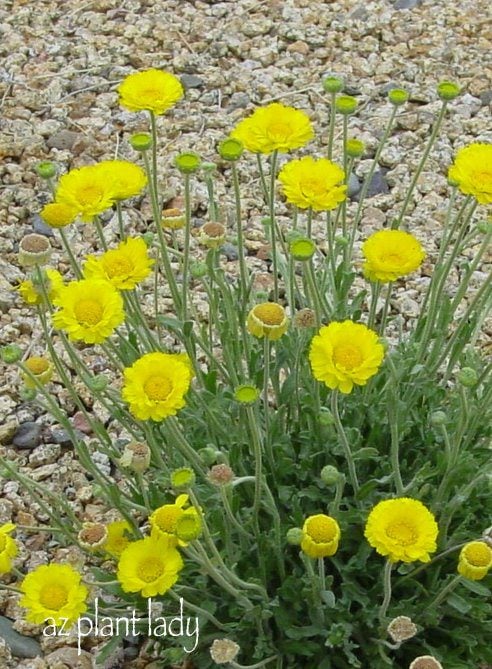
Desert marigold (Baileya multiradiata) is often thought of as a wildflower although it is a perennial. Yellow daisy-like flowers are produced throughout much of the year. Hardy to zone 6 (-10 degrees F), Desert marigold is extremely drought tolerant and can often survive on rainfall alone when started from seed. Cut back twice a year to 6 inches to encourage more bloom. They are rather short-lived, but do self seed.
All of the plants mentioned need to be planted in full sun. No special soil amendments are needed. With the exception of the desert marigold, supplemental irrigation is needed. And so, if you have a bare, sun-baked corner in your garden, I hope you will try one of these sun-loving desert plants.